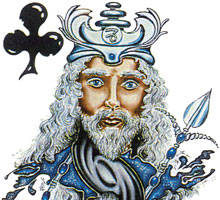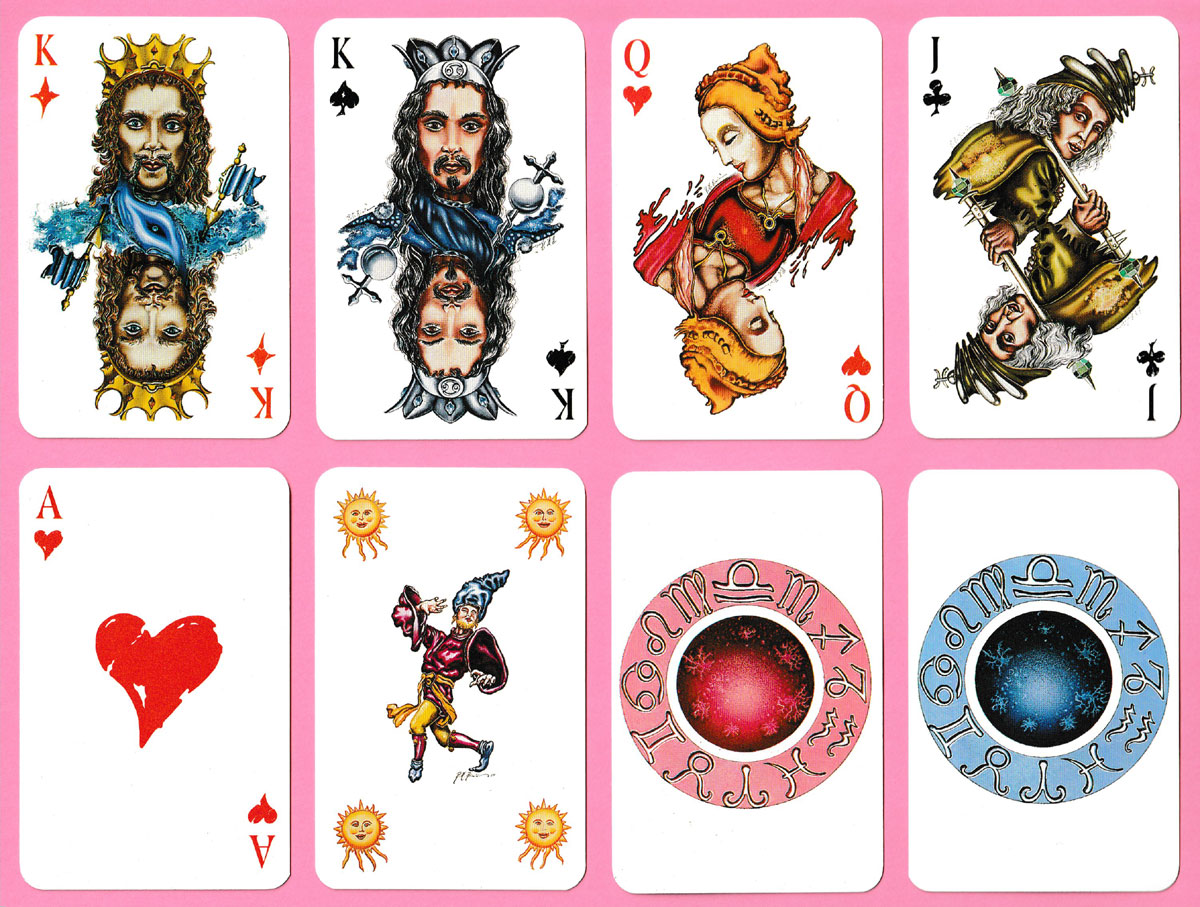Zodiac Bridge
Zodiac Bridge was designed by René Marcel Rivière and printed by AGM Müller in c.1989. A different sign of the zodiac appears on the clothing of each court card figure.

[[*longtitle]]
Zodiac Bridge was designed by Austrian painter, sculptor and graphic artist René Marcel Rivière (b.1950- ) and printed by AGM Müller in c.1989. The figures are dramatic, intense and surreal with depth of detail: a sort of ‘fantastic realism’. A different sign of the zodiac appears on the clothing of each court card, reflecting the artist's interest in metaphysical themes and human destiny. René Marcel Rivière also designed an erotic tarot deck and has exhibited his paintings in Austria, the US and Germany.

Above: Zodiac Bridge designed by René Marcel Rivière and printed by AGM Müller in c.1989. Red or blue backs featuring signs of the zodiac round a central orb. 57x89mm; 52 cards + 3 Jokers. The original edition was also produced with gilt edges.
René Marcel Rivière studied at the Vienna Academy of Applied Arts. He brings myths and other religious experiences of life and death into his work, which deals with the subject of the Tarot, Astrology (Zodiac), and alchemy.
Note from Roddy Somerville
Slightly later, there was a second edition in which the large suit-signs on the court cards were replaced by much smaller ones in line with those on the numeral cards. Indices in English (K, Q, J) were also added, making the cards easier to use. The packs were produced in pale pink or pale blue boxes rather than the deep pink and dark blue boxes of the first edition. All the other cards, including the Joker(s) and the back design, remained the same. The second edition is much more commonly seen than the first - RS. See the boxes►


By Simon Wintle
Member since February 01, 1996
I am the founder of The World of Playing Cards (est. 1996), a website dedicated to the history, artistry and cultural significance of playing cards and tarot. Over the years I have researched various areas of the subject, acquired and traded collections and contributed as a committee member of the IPCS and graphics editor of The Playing-Card journal. Having lived in Chile, England, Wales, and now Spain, these experiences have shaped my work and passion for playing cards. Amongst my achievements is producing a limited-edition replica of a 17th-century English pack using woodblocks and stencils—a labour of love. Today, the World of Playing Cards is a global collaborative project, with my son Adam serving as the technical driving force behind its development. His innovative efforts have helped shape the site into the thriving hub it is today. You are warmly invited to become a contributor and share your enthusiasm.
Related Articles
Most Popular
Our top articles from the past 28 days


















